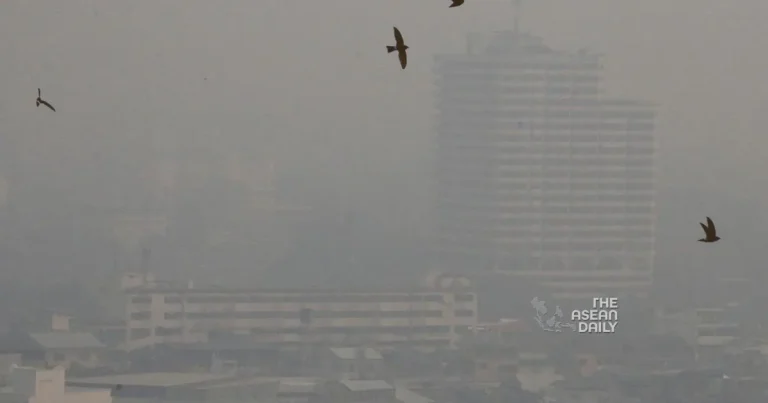17-3-2024 (BANGKOK) IQAir, a Swiss air quality technology company, reported on its website at 9:16 am on Sunday that Chiang Mai had ranked as the third worst city in terms of air quality. The city recorded an AQI (air quality index) of 179 and 110.25 micrograms of PM2.5 fine pollutants per cubic meter of air (µg/m3).
The AQI serves as a measure of air pollutant concentrations in ambient air pollution and the associated health risks. It categorizes air quality into five levels: good, moderate, unhealthy for sensitive groups, unhealthy, and very unhealthy.
Chiang Mai fell into the unhealthy category with an AQI ranging from 151 to 200, accompanied by PM2.5 levels ranging from 55.6 to 150.4 µg/m3.
The deteriorating air quality in Chiang Mai prompted Prime Minister Srettha Thavisin to visit the northern province on Friday when it was ranked as the worst major city in the world for air quality.
While the international city rankings focus on air quality in city centers, a localized check on the IQAir website at 9 am on Sunday revealed that Chiang Rai had the worst air quality in Thailand, with an AQI of 218, placing it in the very unhealthy category.
On Sunday morning, Prof Dr. Kwanchai Suparatpinyo, the director of the School of Health Sciences Research at Chiang Mai University’s Faculty of Medicine, posted on his Facebook wall that air quality in Thailand remained poor, although fewer hotspots were detected in the country.
According to Kwanchai, at least two areas were categorized as brown zones, indicating dangerous air quality with PM2.5 levels averaging over 250 µg/m3 per hour. Sixteen areas were identified as purple zones, reflecting extremely bad air quality with PM2.5 levels averaging between 151 and 250 µg/m3 per hour. Additionally, 148 areas fell into the red zone, indicating bad air quality, with PM2.5 levels averaging between 56 and 150 µg/m3 per hour. Kwanchai also cited data from the S-NPP satellite, which detected nearly 2,000 hotspots in Thailand over the past 24 hours until 5:30 am on Sunday, and approximately 7,000 hotspots in Myanmar.
The satellite imagery revealed over 100 hotspots in Chiang Mai on Saturday, indicating significant sources of fire and smoke.
Kwanchai noted that the Meteorological Department had issued a warning about low air mobility in Chiang Mai on Sunday, which would lead to the accumulation of PM2.5 pollutants throughout the day.
Meanwhile, a Facebook page called “Ai Chong,” which reports on current social issues in China, shared warnings from Chinese influencers advising against traveling to Chiang Mai due to the poor air quality.
The Ai Chong page quoted some individuals who stated that they would postpone their travel plans to Chiang Mai due to high levels of smog.
Chinese social media users have also utilized the hashtag #ChiangmaiSmogSeason to discuss and raise awareness about the air pollution in the city.




